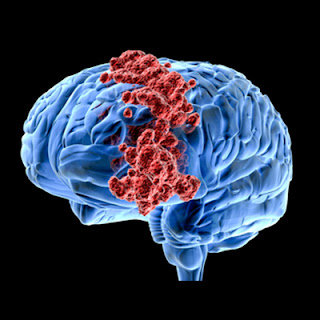- A tumour is a mass or growth of abnormal cells. Brain tumours are classified as primary, which start in the brain, or secondary, which start in another part of the body and spread (metastasise) to the brain. Primary brain tumours can be non-cancerous (benign) or cancerous (malignant). Secondary brain tumours (metastatic brain tumours) are malignant and are more common. Either benign or malignant brain tumours may require treatment because, as they grow, they press on normal brain structures in the confined space inside the skull.
- A team of Neurosurgeons, Neuro-oncologists, radiation oncologists, medical oncologists and other medical specialities work together to treat each Brain Cancer patient. They consider each patient’s type and extent of Brain Cancers to recommend the most appropriate treatment plan. They also carefully consider and select the treatment option that will allow the patient to maintain improved quality of life with good survival rate.
Types of Brain Cancer
Brain tumours can be classified into two general groups: primary and secondary.
Primary Brain Tumours
- Tumours that originate within brain tissue are known as primary brain tumours. Primary brain tumours are classified by the type of tissue in which they arise. The most common brain tumours are gliomas, which begin in the glial (supportive) tissue. There are several types of gliomas, including the following:
- Astrocytomas arise from small, star-shaped cells called astrocytes. They may grow anywhere in the brain or spinal cord. In adults, astrocytomas most often arise in the cerebrum. In children, they occur in the brain stem, the cerebrum, and the cerebellum. A grade III astrocytoma is sometimes called anaplastic astrocytoma. A grade IV astrocytoma is usually called glioblastoma multiforme.
- Oligodendrogliomas arise in the cells that produce myelin, the fatty covering that protects nerves. These tumours usually arise in the cerebrum. They grow slowly and usually do not spread into surrounding brain tissue.
- Ependymomas usually develop in the lining of the ventricles. They may also occur in the spinal cord. Although these tumours can develop at any age, they are most common in childhood and adolescence.
There are other types of brain tumours that do not begin in glial tissue. Some of the most common are described below:
- Meningiomas grow from the meninges. They are usually benign. Because these tumours grow very slowly, the brain may be able to adjust to their presence; meningiomas may grow quite large before they cause symptoms. They occur most often in women between 30 and 50 years of age.
- Schwannomas are benign tumours that arise from Schwann cells, which produce the myelin that protects peripheral nerves. Acoustic neuromas are a type of schwannoma. They occur mainly in adults. These tumours affect women twice as often as men.
- Craniopharyngiomas develop in the region of the pituitary gland near the hypothalamus. They are usually benign; however, they are sometimes considered malignant because they can press on or damage the hypothalamus and affect vital functions. These tumours occur most often in children and adolescents.
- Germ cell tumours arise from primitive (developing) sex cells, or germ cells. The most frequent type of germ cell tumour in the brain is a germinoma.
- Pineal region tumours occur in or around the pineal gland, a tiny organ near the centre of the brain. The tumour can be slow growing (pineocytoma) or fast growing (pineoblastoma). The pineal region is very difficult to reach, and these tumours often cannot be removed.
Secondary Brain Tumours
- Secondary brain tumours are tumours caused from cancer that originates in another part of the body. These tumours are not the same as primary brain tumours.
- The spread of cancer within the body is called metastasis. Cancer that spreads to the brain is the same disease and has the same name as the original (primary) cancer. For example, if lung cancer spreads to the brain, the disease is called metastatic lung cancer because the cells in the secondary tumour resemble abnormal lung cells, not abnormal brain cells.
- Treatment for secondary brain tumours depends on where the cancer started and the extent of the spread as well as other factors, including the patient’s age general health, and response to previous treatment.

Thanks for your information. Please accept my comments to still connect with your blog. And we can exchange backlinks if you need. What Is Brain Cancer?
ReplyDelete